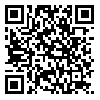Volume 6, Issue 1 (9 2000)
Back to this Issue |
Back to browse issues page
Download citation:
BibTeX | RIS | EndNote | Medlars | ProCite | Reference Manager | RefWorks
Send citation to:



BibTeX | RIS | EndNote | Medlars | ProCite | Reference Manager | RefWorks
Send citation to:
DANESHVAR Z. Sleep as an Indicator For Pain Relief in an Infant : Acase Study. Journal of Hayat 2000; 6 (1) :60-66
URL: http://hayat.tums.ac.ir/article-1-334-en.html
URL: http://hayat.tums.ac.ir/article-1-334-en.html
Abstract: (9606 Views)
Sleep is not often used to indicate Pain Relief in infants.If Infants and childeren "s sleep Patterns are Distured by Painful Procedures they dont experience Restful sleep . Further more if Pain and lack of sleep are Continuous, other more global! Functional beheriors Such as Sociability and Consolability may be affected because lack
of and disturbed sleep were Cues of infant Pain.There fore if rest Ful sleep is increased, Pain is decreased. Similar Study in adults were observed that who received Patient Controlled analgesia had less nocturnal awakehing and less interference with spontaneous move ment such as moving and walking secandory to build and
repair tissue.Several abutt studise Provide evidence of tissue remeval a ssocited with release of the growth hormone during deep sleep and %70 of the total Secretion of this hormone occurs during sleep .in this Case Study infant 's increased sleep was used as an indicator of Pain relief for an 8-month old female infant with respiratory Failure Secondary to Sepsis. A sleep activity record documented total hours of sleep and longest hours of Sleep after nonana Igesic and analgesic interventions to mediate the infant 's Pain, sleep appeare to be a useful indicator of the afficacy of pain treat ment for infants.
Keywords: Painrelief
| Rights and permissions | |
 |
This work is licensed under a Creative Commons Attribution-NonCommercial 4.0 International License. |





